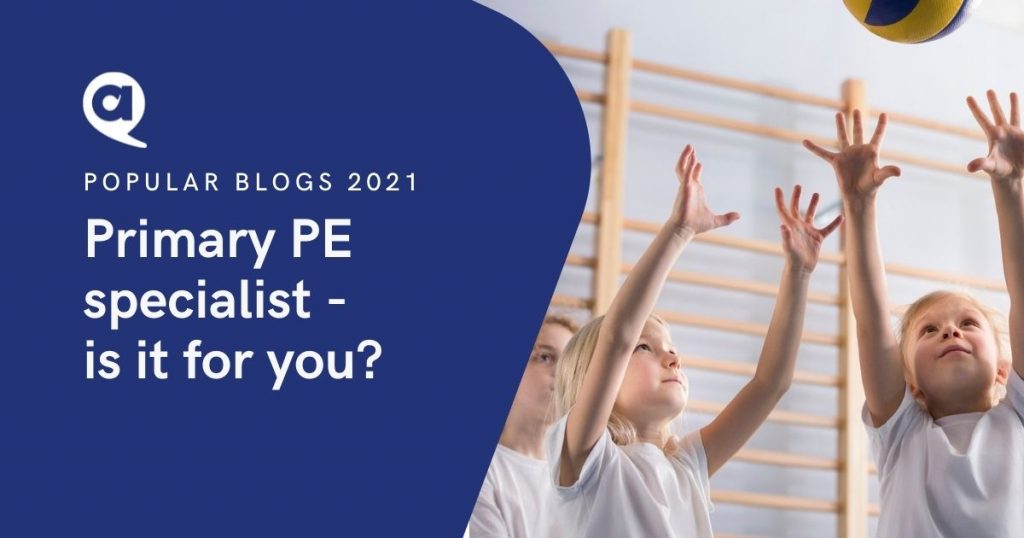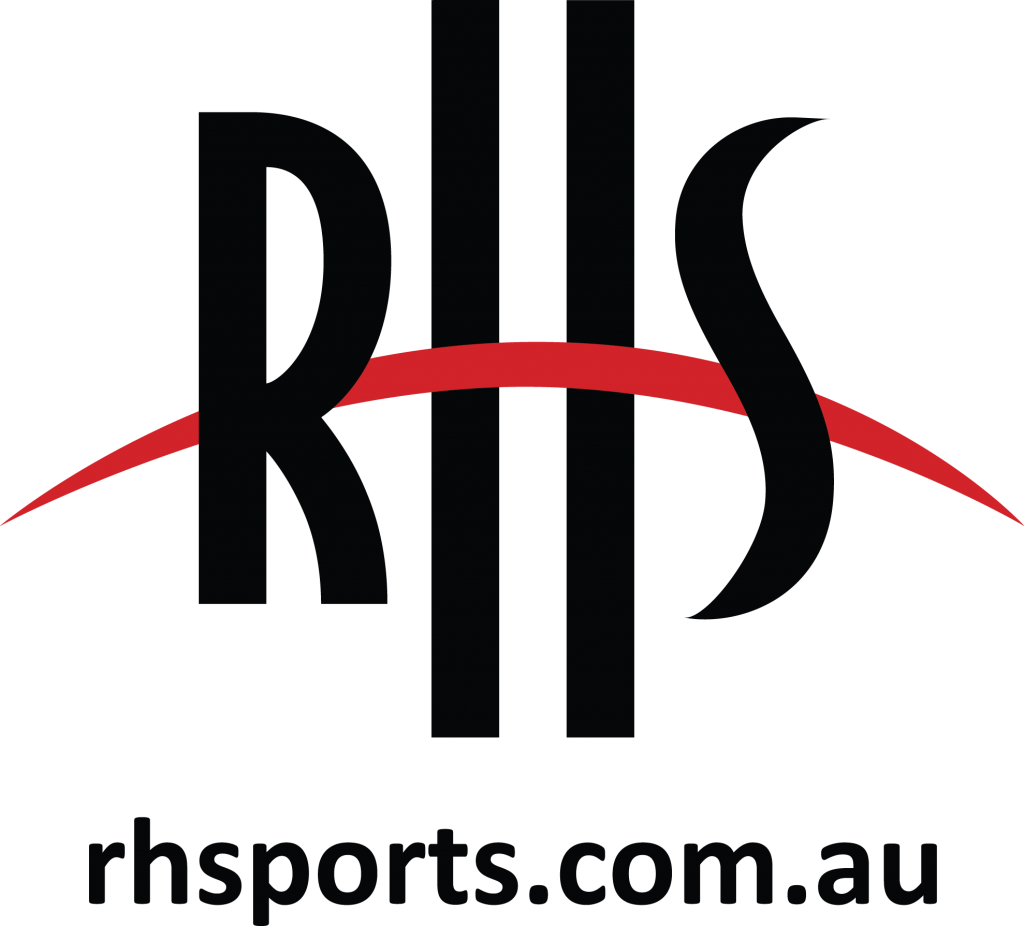
October 2021
By Lisa Quinn

Have you ever thought about switching from high school PDHPE teaching to a primary school PE specialist/RFF teacher?
High School Head of Department PDHPE Teacher Lisa Quinn did just that. A high school teacher of 18 years, she has spent the last 3 years working as a primary teacher specialising in PE.
Here she shares her reflections on the change and key learnings from teaching primary students.
Sport has always been a passion of mine. From the time I was in Year 10, I decided high school PDHPE teaching was for me. I needed to be in this profession, I loved sport, and working with kids, big kids, the ones who could already catch and throw, I could be paid to play sporting games all day! Sound familiar?
What I learnt along the way and my reasoning for joining the profession changed. Teaching, educating, is all about passing down the knowledge, skills, values, attitudes, behaviours for children to thrive and be successful, happy, respectable and responsible human beings.
I educate because I want to make a difference in the lives of students, no matter what subject or age, I want to contribute to their growth and give them hope for their future.
That is what made the transition from high school to primary school familiar and worthwhile.
First experiences
My first experience was as a parent helper in my child’s kindergarten class, I took my hat off to those teachers, and thought how do they survive!
It was innate that in a short period of time as a parent helper, my natural rapport with kids and my passion for providing quality teaching and learning shone through. I started to seamlessly draw upon my extensive teaching skills to adapt to the kindergarten environment.
The mechanisms are the same, right? Ascertain what the child needs to learn (knowledge, skills, processes) and work out how best you are going to get them there. It was here in this kindergarten room that my passion and dedication for teaching high school students started to shift to primary school children.
Passion and commitment key
Without the passion and connectedness to want to be part of their learning process, then I do not think this transition would have been successful.
If you are like me and are committed to getting better than you were yesterday, committed to your own personal growth and improving student outcomes, then you are going to adapt your practice to ensure improvement occurs in these areas.
If you are committed to bringing positive energy every day, being flexible with your practice and a keen sense of humour, you will make the switch work.
Little children are filled with excitement and can be a logistical challenge to keep them focused and not flying off like helium balloons. Therefore, teaching a quality PE lesson in a primary school, I believe requires adjustment and refinement of your craft.
Before you start thinking about best pedagogical practice you need to have good classroom management and organisation, you need to have solid routines and procedures in place to ensure you can get on with what you love to do – teach!
Top tips
Here are my hacks that you do not learn in a high school setting – but need to know to support those great innovative, learning activities you have planned.
1. Consider the language you use.
Unlike high school these little ones are learning how to read and write. They may not know the difference between in and out, in front of or behind of, they may not know what it means to stand beside something.
In K-2, I spend the whole first term incorporating games which develop these understandings. You may have all heard of the game Captains Coming where the teacher calls out a command like scrub the deck and the students perform that task. I will incorporate command games like this into my lesson, in order to teach them organisation skills.
I will call out, “I want you to run, skip or hop to the base line, side line, centre line”. Building explicit sport terminology will absolutely assist you in organising your students for an activity or game.
You need to create an understanding of sport and its rules, when playing some children will not understand a boundary line. Through demonstration I will explicitly teach what it means to stay in the boundary and go out of bounds. Equipment! Bat, racquet, stick… the list goes on and I love introducing them to it. I will use role plays or zones to teach the language and tactical skills of attacker, midfielders, and defenders.
2. The art of the whistle
The art of the whistle or as I like to call it Pavlov’s theory of classical conditioning: many teachers comment on how effortless my lessons appear, how I can easily get students so excited and have them stop and be settled in a heartbeat. It comes down to the art of the whistle, conditioning.
By the time students get to high school we have hoped that many of them have played some kind of sport and had an experience with an umpire. The whistle hack technique is a must with primary students, especially if you want to save your voice, have students settled for instruction, or to move onto a new activity quickly.
After several lessons of whistle repetition, students are conditioned to the sound:
- start whistle – one short and sharp blow
- stop whistle – double short sharp blow
- activity is over whistle – one long whistle usually accompanied by arm moments to sit down
- final full-time whistle – two short, sharp blows, followed by a long and short blow.
I highly recommend you learn these techniques before taking on the challenge of managing our little ones, successfully, efficiently and effectively.
3. Rubber dots
These are flat rubber circles around 20cm in diameter and are a must have for any K-2 class. Little students require a definitive place to sit or stand. They are still learning the concept of spatial awareness and safety. Whether it is a bull rush activity or kicking and throwing in pairs, I will always take the time to place down the rubber dots to ensure students limit their movement and to keep them safe.
4. Good sportspersonship
Primary students love sport, and sometimes they can get caught up in the game and become focused on winning or wanting to know the score.
Plan to teach the values of respect, caring, fairness, integrity and responsibility into your lessons. Without this you are guaranteed to have frustrated, upset, disappointed or even angry little human beings.
The reward
What I most love about teaching in the primary sector are the relationships you form with your students and the rewards this brings.
There are many more light bulb moments as kids grasp the ability to throw or catch an object.
Being a relief teacher for every class, provides a connection with every child in the school. You will feel valued. They will turn up to your lesson full with energy and enthusiasm and it is contagious! If you’re having a bad day, or feeling flat, when you see their bright-eyed little faces, you rise to the occasion, their enthusiasm will lift you and fill your heart with joy. They smile at you like it is the best day of their life, who could not love that!
Final thoughts
Lastly, and unfortunately, I have come to discover that due to a lack of PE specialist teachers in the primary schools, a lot of schools deliver PE by external sport coaches.
Would we allow literacy or numeracy be taught by a person with a level 1 certificate or would best practice suggest literacy and numeracy to taught by a person with a University degree? Why do we accept the lowering of standards in PE when we know physical education is invaluable for life?
If you have thought about the switch I encourage you to try, I had no idea I was going to fall in love with the position and make a monumental difference to so many young lives.


